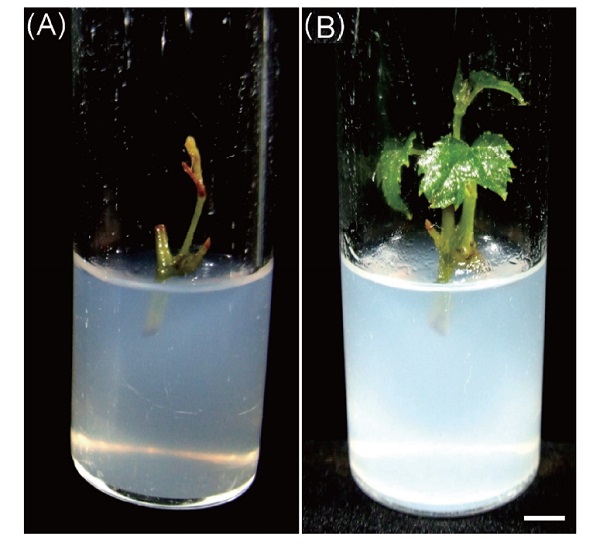All issues

Author:Yih-Juh Shiau*, Ming-Te Lu, and Tsung-Chun Lin
Abstract:
Hypochlorous acid (HOCl) possesses potent oxidative capabilities and can disrupt the permeability of microbial cell membranes, thereby achieving sterilization. The main purpose of this study was to determine the impact of different light illuminations or high-temperature autoclaved sterilization on the degradation of HOCl. Furthermore, the study explored the effects of external disinfection treatments with different concentrations of HOCl on reducing the contamination rate of Vitis thunbergii Sieb. & Zucc stem node explants. The results showed that the stability of the solution containing 198.3 ± 3.4 mg L-1 of HOCl could be maintained for more than 5 d if it was placed in brown glass bottled indoors at room temperature in the shade. Minimal alteration in the HOCl content was observed after autoclaving. When 0.6% (w/v) sodium hypochlorite (NaOCl) solution was used for external disinfection of Vitis thunbergii Sieb. & Zucc stem nodes for 20 min, the explant contamination rate was 82.2 ± 1.6% (Control), which was significantly higher than the treatments using 150 and 200 mg L-1 HOCl solutions (61.1 ± 5.7% & 57.8 ± 4.2%). After a 21-day culture period, HOCl demonstrated no adverse effects on the normal growth of stem nodes. Thus, replacing NaOCl with HOCl for external disinfection of explants appears to be a viable alternative.
Key words:Autoclaving, Light illumination, Microbial contamination, Tissue culture
Download:![]() PDF Links
PDF Links
- 1. Development of Tractor-Mounted Seedling Transplanter for Sweet Potato
- 2. Synergistic Effect of Additional Gas on the Toxicity of Phosphine to Sitophilus oryzae and Sitophilus zeamais (Coleoptera: Dryophthoridae)
- 3. Effects of Temperature and Solar Radiation on Growth Traits and Plant Elements in Purple Leafy Sweet Potato
 Submit your manuscript
Submit your manuscript
 Guide for authors
Guide for authors